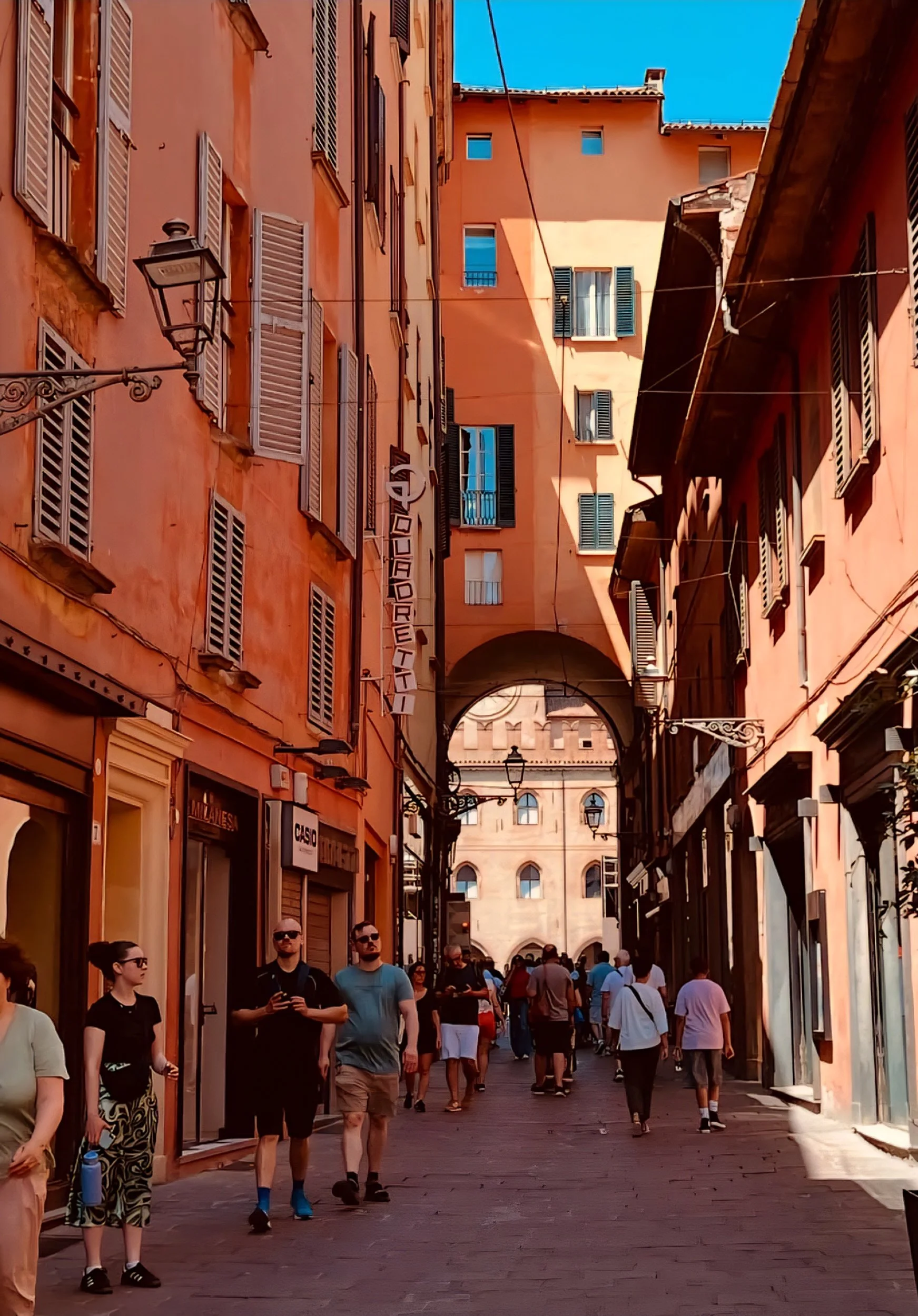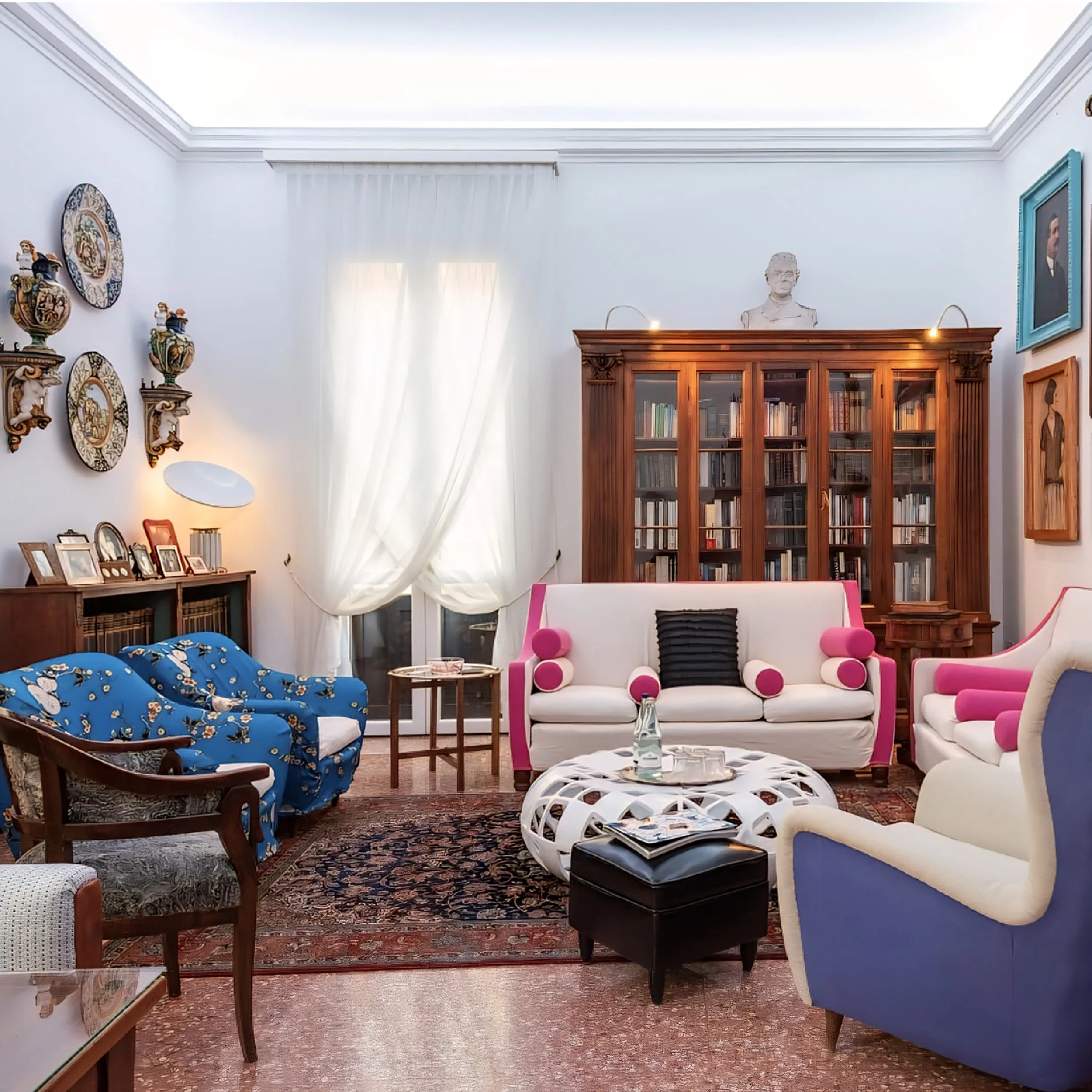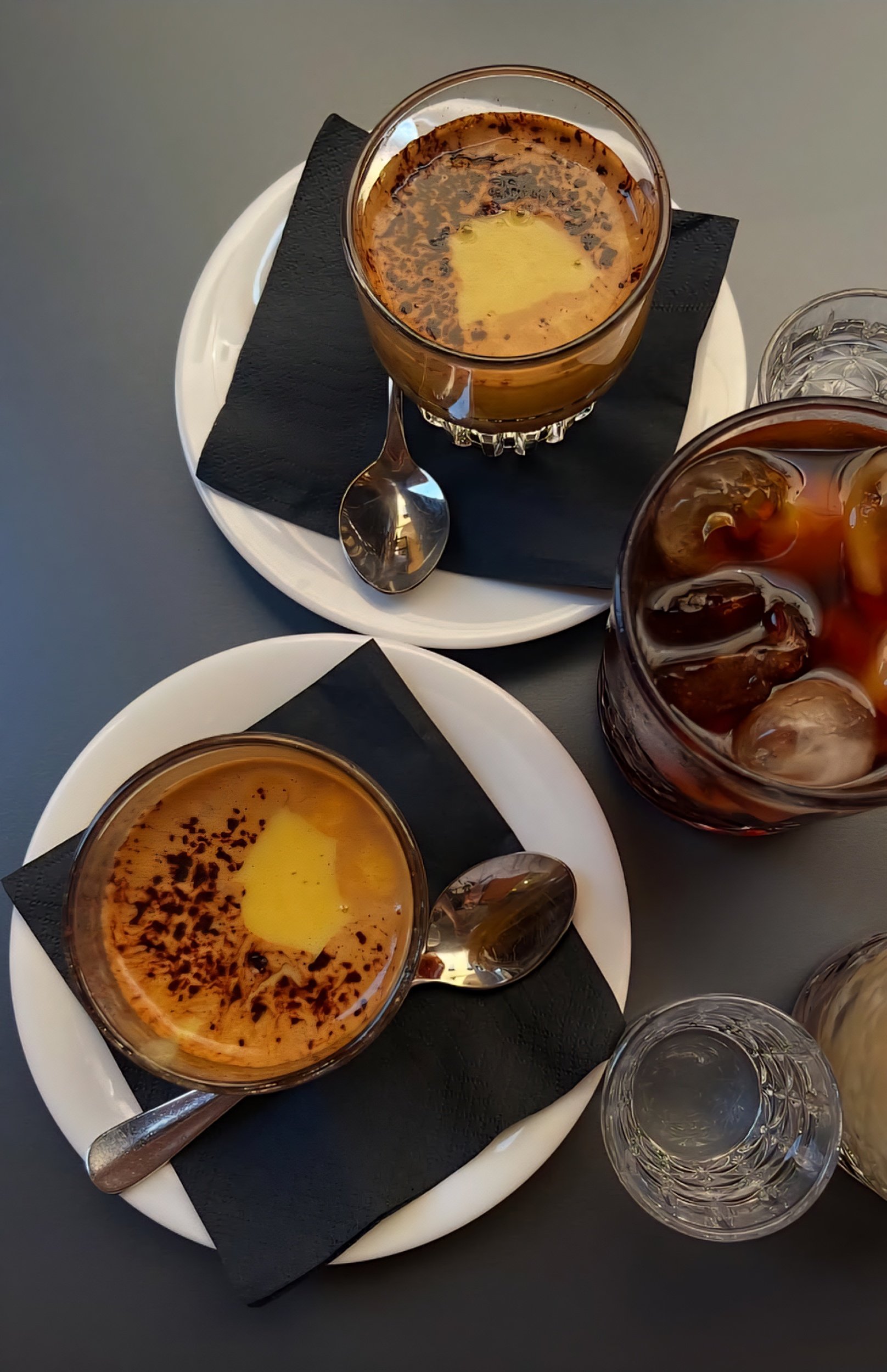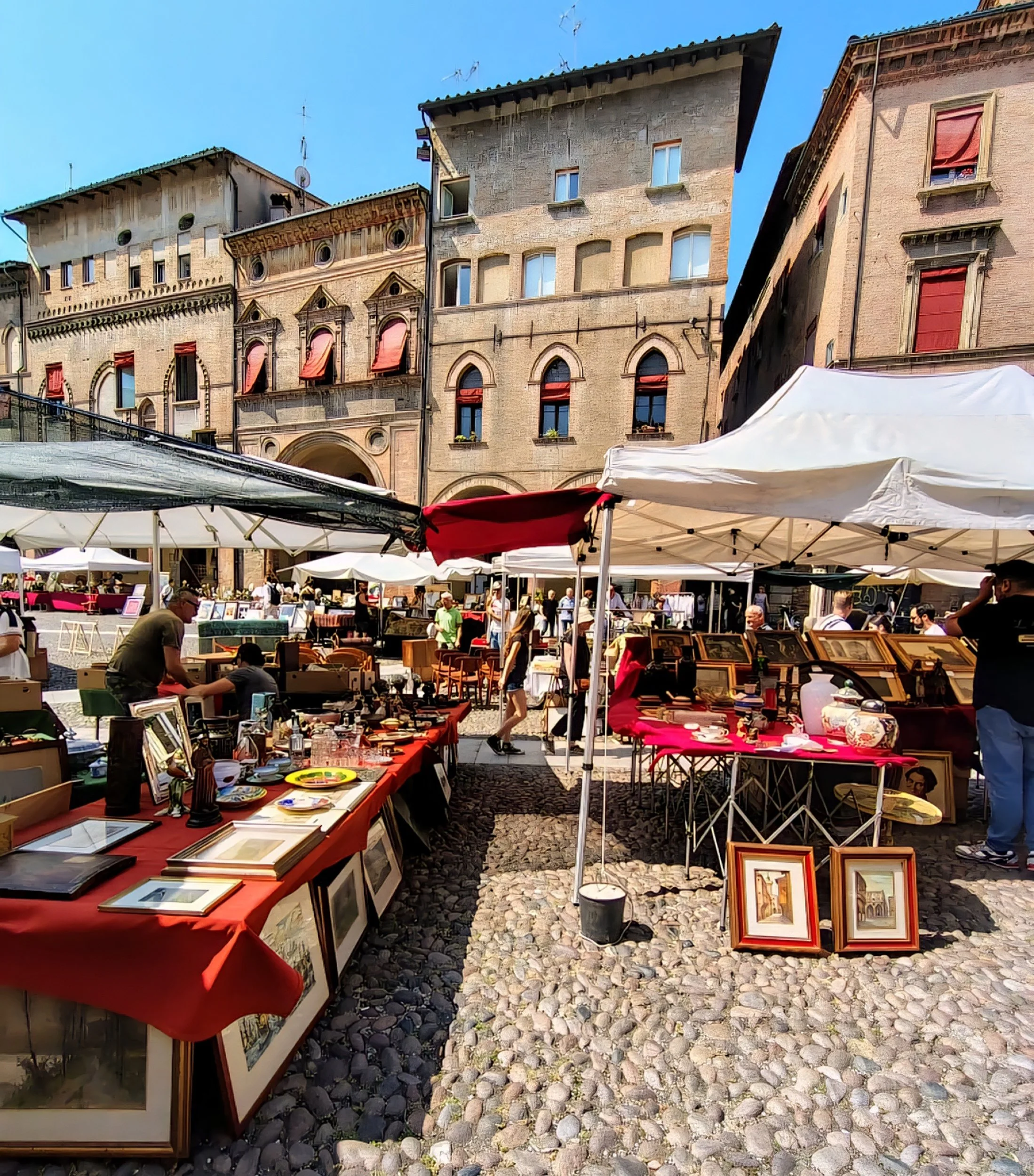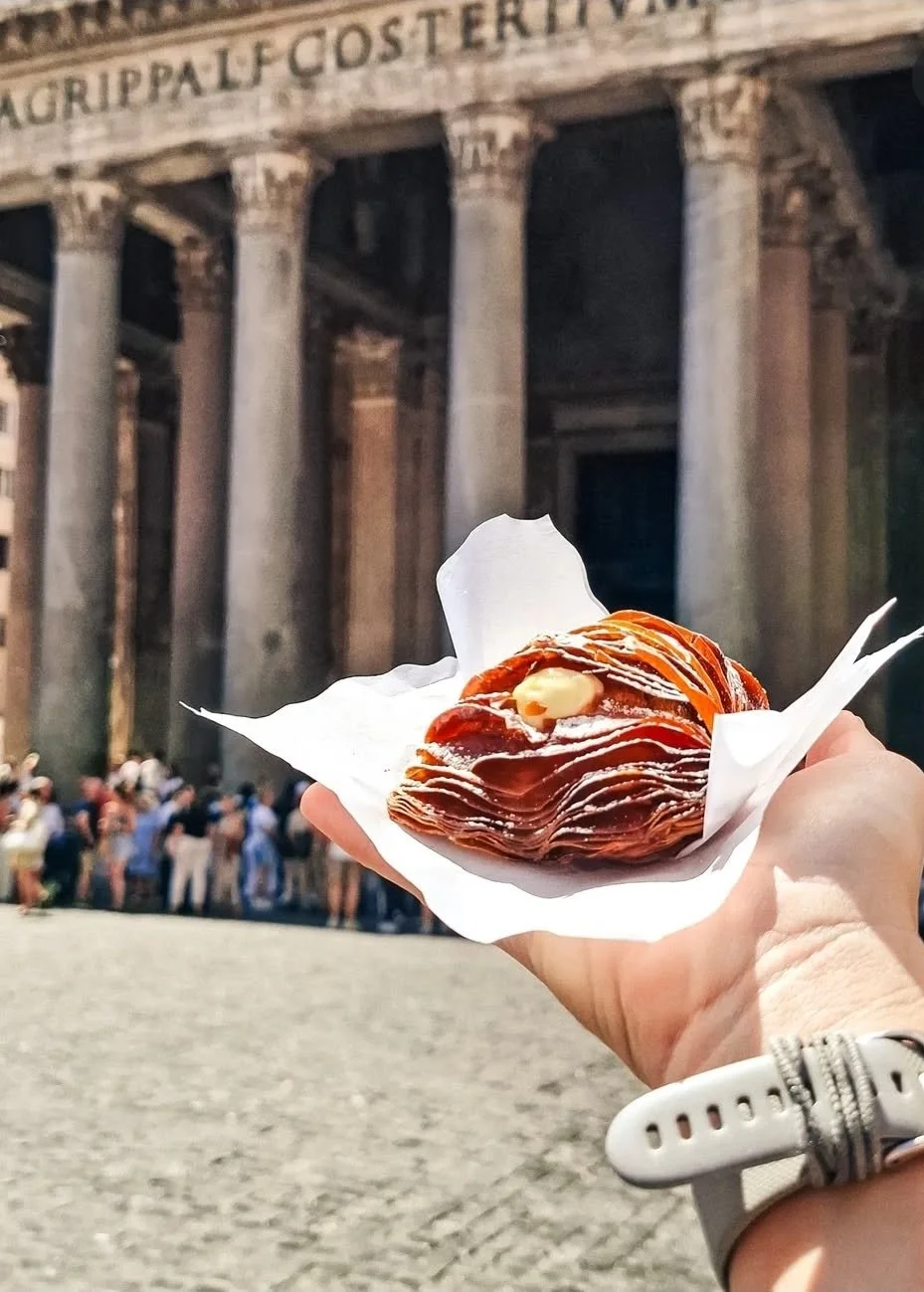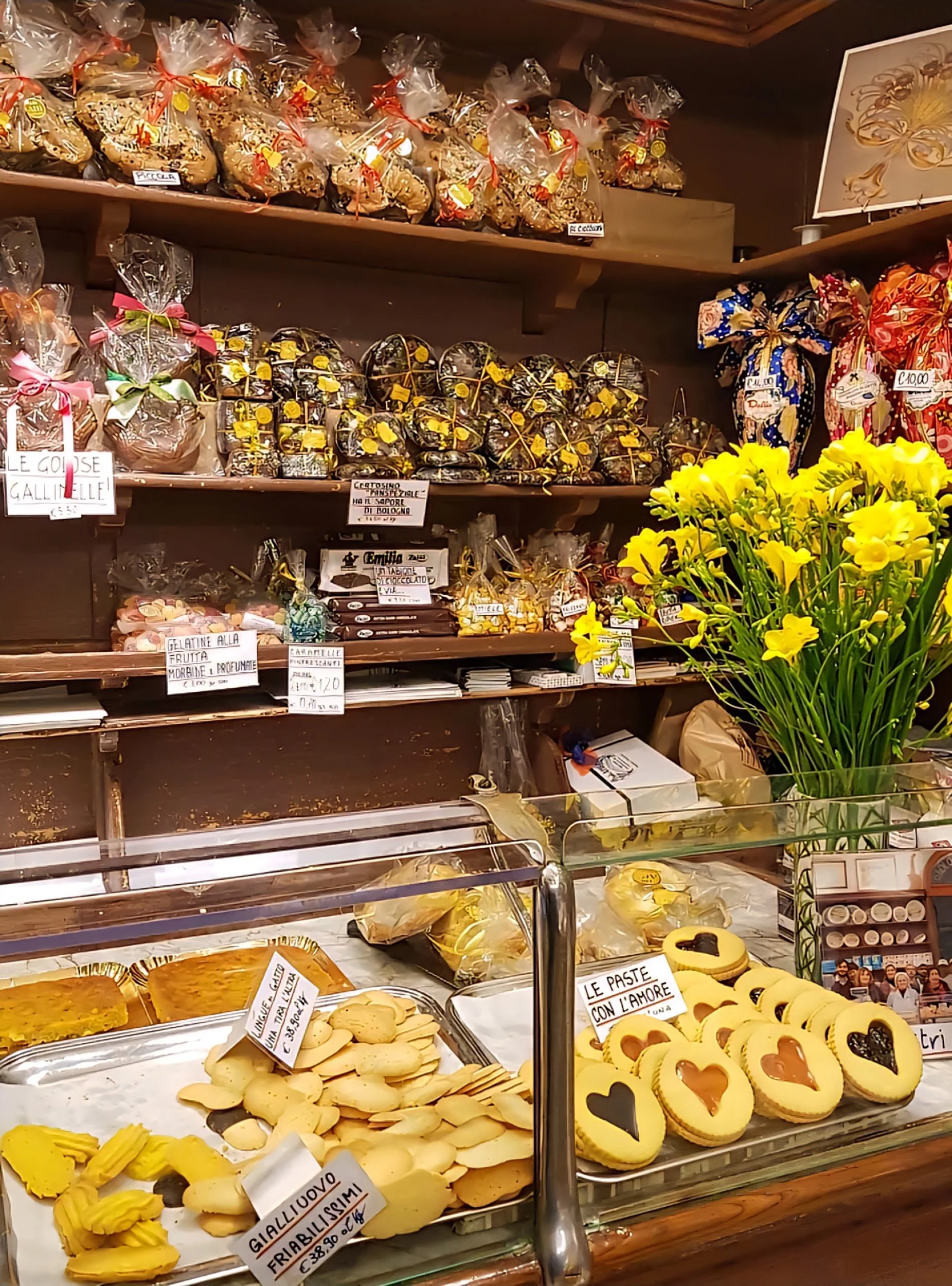Bologna Food Guide: Backstreet Osterias, Morning Markets and Slow Travel
Getting to Bologna and Setting the Tone for Your Culinary Trip
Bologna is right in the heart of Emilia-Romagna, one of Italy’s most celebrated food regions, and it’s surprisingly easy to reach. High-speed trains will get you here in about 35 minutes from Florence, just over an hour from Milan, around 90 minutes from Venice, and a little more than two hours from Rome. They run often, they’re comfortable, and you’ll arrive right in the centre of the city.
If you’re flying in, Bologna Guglielmo Marconi Airport is only about 20 minutes away. You can grab the Marconi Express monorail, which runs every few minutes and drops you at Bologna Centrale station, or hop in a taxi if you’ve got luggage or an early start.
Driving isn’t the best idea here. The old town is a limited traffic zone, parking is expensive, and once you’re in the city you can walk everywhere you need to go. For a trip focused on food, the last thing you want is to be worrying about your car.
When you arrive, don’t feel like you have to head straight to Piazza Maggiore with the rest of the crowd. Instead, take a slower route into the city through streets like Via Galliera or Via Indipendenza. You’ll pass arcades the colour of baked terracotta, corner cafés where the morning regulars stand at the bar, and locals cycling home with bags of fresh pasta or vegetables from the market.
Your first day shouldn’t be about racing through a list of “must-eat” spots. Let Bologna introduce itself at its own pace. Have a coffee, wander the markets, stop for a plate of fresh tortellini, and spend more time in places you like rather than feeling you have to keep moving. That’s when the city starts to feel like yours.
Best Boutique Hotels in Bologna for Foodies
For a slow-travel trip, location is more important than star ratings. Staying in or near the historic centre means you can walk to markets, bakeries, and restaurants without ever needing a car or public transport. You’ll also be able to enjoy the city before the day-trippers arrive and after the crowds thin out.
Casa Bertagni
This small boutique guesthouse feels more like staying in a friend’s elegant townhouse than in a hotel. Each room has a different theme inspired by Bologna’s history and is filled with thoughtful details, from antique furniture to locally made ceramics. Breakfast is homemade, and the owners are generous with advice, especially when it comes to recommending their favourite osterias.
Hotel Touring
Set just outside the busiest tourist streets, this hotel strikes the right balance between convenience and calm. You can walk to Piazza Maggiore in under ten minutes yet still come back to a quieter street at night. The rooftop terrace is a highlight, with views over the terracotta rooftops that are perfect for a glass of wine after a day of exploring food markets and trattorias.
Albergo delle Drapperie
If you want to be right in the middle of the action, this charming hotel is in the Quadrilatero market district. Step outside in the morning and you are already among stalls selling fresh pasta, cured meats, and seasonal produce. Rooms are simple but full of character, with old wooden beams and tall windows that open to the sound of the market below.
If you prefer something more independent, look for Airbnb apartments in the Santo Stefano or Saragozza areas. These neighbourhoods are quieter at night and full of local life. You will be within walking distance of excellent bakeries, family-run cafés, and small wine bars, which is ideal if you want to live like a local for a few days.
Casa Bertagni
Morning in Bologna: Coffee, Breakfast and the City’s Best Food Markets
In Bologna, mornings start slowly and with purpose. The first stop is always coffee. Skip the hotel buffet and find a neighbourhood bar where locals gather before work. Stand at the counter, order a cappuccino, and pair it with a small pastry or a slice of torta di riso, a sweet rice cake that’s a local favourite. Bar Aroma near Piazza Aldrovandi is a great choice. They roast their own beans, and even during the busy morning rush there’s a calm, welcoming feel.
Once you’ve had your coffee, head to Mercato delle Erbe, the city’s main indoor market and a daily shopping spot for locals. It is less crowded with tourists than the Quadrilatero, and the variety is incredible. You’ll see stalls piled high with seasonal vegetables, handmade tortellini, tagliatelle ready to take home, and huge wheels of Parmigiano Reggiano. If you are here in autumn, look out for baskets of fresh porcini mushrooms. In spring, you might find tender green peas or bunches of white asparagus.
For a smaller market with a different feel, wander over to Mercato di Mezzo. It has a mix of ready-to-eat counters and shops selling local goods. Some stalls lean more towards the tourist crowd, but if you explore the side aisles you can still find traditional products like aged balsamic vinegar, Modena salami, and fresh egg pasta made that morning.
If you are lucky enough to be in Bologna on a Saturday, make time for Mercato Ritrovato. It takes place in the courtyard of the Cineteca di Bologna and feels more like a community gathering than a commercial market. Local farmers and artisans set up small stalls selling their own cheeses, breads, cured meats, and jars of homemade jams. You can chat with the producers, sample before you buy, and put together the perfect picnic for later in the day.
If you are planning to cook during your trip, this is the time to pick up fresh pasta, olive oil, and seasonal produce. Even if you are not, it’s worth coming just for the colours, smells, and easy pace of a Bologna morning.
For more hidden market finds across Italy, don’t miss our guide to Italy’s most authentic small‑town markets - they offer just the kind of quiet, local scenes that make slow travel feel meaningful.
Best Osterias in Bologna Away from the Tourist Crowds
Bologna is full of restaurants claiming to be “authentic,” but the truth is, many of them are geared toward tourists, especially around Piazza Maggiore. If you want a real taste of the city, you need to wander a little further, into streets where menus change with the season and the dining room is filled with locals who greet the staff by name.
Osteria Broccaindosso
This osteria feels like it has been around forever, the kind of place where the menu is handwritten and the tables are set with mismatched plates. It is tucked away on a quiet street, and the portions are famously generous. Order the tagliatelle al ragù or the tortellini in brodo, and make sure to leave room for dessert. The staff have a warm, unhurried way of looking after you, which makes the meal feel like a proper event.
Trattoria di Via Serra
A little outside the main centre, but worth every step. The owners are passionate about sourcing from small local farms, and it shows. The menu changes daily based on what’s fresh, but you might find pumpkin tortelloni in the autumn or fresh tagliolini with truffle in winter. The atmosphere is relaxed but with real attention to detail. Reservations are essential, especially for dinner.
Osteria dell’Orsa
Popular with students and locals, this spot has long communal tables and a lively atmosphere without feeling overwhelming. Prices are fair, and the tagliatelle al ragù here is a classic. It is a good place for a casual lunch before an afternoon of wandering. Go early, as it fills up fast.
If you are visiting in winter, keep an eye out for passatelli in brodo, a comforting breadcrumb and cheese pasta served in clear broth. It is simple, warming, and a great example of Bologna’s humble but deeply satisfying cooking traditions.
These osterias are not the kind of places where you rush in, eat, and leave. They invite you to stay, talk, and enjoy a second glass of wine while you watch the rhythm of the dining room. That is where Bologna’s real food culture lives.
Best Gelato Shops and Afternoon Sweet Stops in Bologna
Bologna might be known as Italy’s food capital, but its gelato scene is just as serious as its pasta. The rule here is simple: if the gelato is piled high and neon-coloured, keep walking. The best places keep their gelato in covered metal tubs and make it fresh every day, often with seasonal flavours that change week to week.
Cremeria Santo Stefano
This is the gelateria people whisper about like it’s a secret, even though locals will happily point you there. The pistachio is rich and nutty, made with real nuts rather than syrup, and the seasonal fruit flavours actually taste like the fruit they come from. If they have fig or pear when you visit, order it without hesitation.
Galliera 49
Just a short walk from the train station, this is the perfect last stop before you leave the city. They are known for their intense dark chocolate sorbet and creamy fior di latte. Even on busy afternoons, the service is quick and friendly, and you can take your cone for a slow walk under the arcades.
If you feel like something other than gelato, stop into Pasticceria Gamberini, one of Bologna’s oldest pastry shops. The window display alone is worth a visit, with rows of delicate cakes, glossy fruit tarts, and tiny biscuits stacked in glass jars. It is an ideal spot for a mid-afternoon espresso, especially if you’ve spent the morning at the markets and need to sit down for a moment.
For an even more low-key break, keep an eye out for the smaller pasticcerie tucked into residential streets. These places often have no signage in English, but if you see locals queuing for a tray of pastries, you’ve found the right place. Try a slice of torta di riso or a maritozzo filled with cream, both pair perfectly with a small caffè.
Independent Food Shops in Bologna Worth Visiting
One of the best parts of slow travel in Bologna is wandering into small food shops where the shelves are stacked with local products you’ll struggle to find anywhere else. Around the Quadrilatero market district, there are plenty of places selling pasta and cheese, but the trick is to look past the souvenir-heavy storefronts and step into the ones where locals are actually shopping.
Tamburini
A Bologna institution, this historic deli is perfect for a pre-picnic stop. Counters are filled with cured meats like mortadella and culatello, wedges of Parmigiano Reggiano, and fresh pasta ready to cook. They also prepare simple takeaway boxes with bread, cheese, and salumi - easy to carry for an impromptu lunch on a park bench.
Atti & Figli
Family-run since the 19th century, this bakery and pasta shop is where many locals buy tortellini for Sunday lunch. The windows are filled with golden pasta nests, and inside you can pick up everything from fresh lasagne sheets to almond biscuits. If you are staying in an apartment, this is where to stock up before cooking dinner at home.
Enoteca Italiana
More than just a wine shop, Enoteca Italiana is the place to discover bottles from small Emilia-Romagna producers you won’t see in the supermarkets. The staff know their stock inside out and will happily suggest a bottle to go with whatever you’re cooking or a cheese you’ve picked up at the market. They also have a small but well-chosen selection of balsamic vinegars and olive oils.
If you are just browsing, let yourself follow your nose… sometimes literally. The smell of fresh bread will lead you straight to Forno Brisa, a modern bakery making everything from rustic sourdough to fluffy focaccia topped with seasonal vegetables. Their bread travels well if you want to take a loaf on the train when you leave.
For souvenirs that aren’t the usual keychains or fridge magnets, these shops are ideal. A bottle of artisanal balsamic vinegar, a bag of handmade egg pasta, or a wedge of cheese wrapped in paper will remind you of Bologna long after your trip ends.
If you enjoy wandering into food shops like Atti & Figli or Tamburini, you might also appreciate our guide to Paris thrift stores and flea markets, where even food and vintage lovers find quiet charm.
Evening in Bologna: Aperitivo, Dinner and Night Walks
Around 6 or 7 pm, the cafés and bars start to fill with people meeting for aperitivo. In Italy, this isn’t just about a drink… it’s a small ritual that signals the day is winding down. You order a glass of wine or a spritz, and it usually comes with a plate of small bites like olives, wedges of focaccia, or slices of salami.
One of the most atmospheric spots is Osteria del Sole, which has been open since the 15th century. They serve only drinks, so you bring your own food from one of the nearby delis or markets. Pick up mortadella, Parmigiano Reggiano, and fresh bread from Tamburini or Atti & Figli, find a table, and you’ve got an instant picnic in the middle of the city.
For dinner, choose somewhere you can linger. Da Cesari is a family-run trattoria that has been in the same hands for generations. The dining room is cosy and lined with old photographs, and the menu leans heavily on traditional Bolognese dishes. If they have gramigna with sausage on the menu, order it. It’s a short pasta curl with just the right balance of richness and spice.
If you prefer something a little more low-key, head back to Trattoria di Via Serra for a relaxed but deeply satisfying meal. The service here is unhurried in the best way, so you can take your time and savour every course.
After dinner, Bologna is perfect for a slow night walk. The porticoes are softly lit, and the streets are much quieter once the day visitors have gone. Stroll toward Piazza Santo Stefano, where the open square feels almost like a courtyard, or wander down side streets until you stumble on a small wine bar still open for a late-night glass.
If you’re visiting in summer, you might find outdoor concerts or small festivals in the piazzas. In the cooler months, the streets are hushed, and you can hear your footsteps echo under the arches. Either way, Bologna at night feels like a city you can keep discovering, even after the restaurants have closed.
When to Visit Bologna, Average Costs and Avoiding the Crowds
Bologna has something to offer year-round, but the experience changes a lot depending on the season. If you want to wander the markets without bumping shoulders or get a table at the best osterias without booking weeks in advance, timing is everything.
Best months for a quieter trip
Spring (April to May) and autumn (late September to October) are hard to beat. The weather is mild, the markets are overflowing with seasonal produce, and the city has a relaxed, local energy. Winter can also be lovely, especially in January and February when there are fewer visitors and the hearty dishes, like passatelli in brodo, feel just right.
Months to think twice about
August is when many locals go on holiday, and some restaurants close for part of the month. The city feels quieter in some ways, but the heat can be intense and a few favourite spots might be shut. If you do visit in summer, plan your days so you’re inside during the midday heat, and focus on evening walks and late dinners.
Costs to expect
Bologna is not the cheapest city in Italy, but it’s far from the most expensive. A coffee at the counter is around €1.50 to €2, lunch in a casual trattoria will usually run €12 to €18 per person, and dinner in a good mid-range restaurant is about €20 to €30 per person without wine. Boutique hotels start at around €100 per night in low season and can reach €150–€200 in high season.
Crowd-avoidance tips (from someone who loves quiet places…)
If you’re visiting popular markets like Mercato delle Erbe or Mercato Ritrovato, aim to arrive early, ideally before 10 am. For osterias, even the local favourites fill up quickly, so make reservations for dinner whenever possible. Piazza Maggiore and the Quadrilatero are at their busiest in the middle of the day, so plan to explore these areas in the early morning or after sunset when the pace is gentler.
Choosing the right time to visit isn’t just about the weather, it’s about finding Bologna when it matches the slower, more personal pace you’re looking for.
Bologna Food Guide FAQ: Questions Slow Travellers Ask
What is Bologna best known for in food?
Bologna is often called Italy’s food capital, and it’s famous for dishes like tagliatelle al ragù (often called Bolognese sauce outside Italy), tortellini in brodo, mortadella, and lasagne alla Bolognese. You’ll also find incredible fresh pasta shops, historic markets, and small osterias serving seasonal dishes that never make it onto tourist menus.
Where can I eat like a local in Bologna?
If you want to avoid tourist-heavy spots, head to osterias and trattorias just outside the main piazzas. Osteria Broccaindosso, Trattoria di Via Serra, and Osteria dell’Orsa are all great examples. These are the kinds of places where you’ll see handwritten menus and locals greeting the staff by name.
What are the best food markets in Bologna?
Mercato delle Erbe is the largest indoor market and a daily shopping spot for locals. Mercato di Mezzo has a mix of food counters and small producers, while Mercato Ritrovato, held on Saturdays, is a farmers’ market where you can meet the producers and taste their cheeses, bread, and cured meats.
Is Bologna good for vegetarians?
Yes, although much of the cuisine here is meat-focused, many restaurants have vegetarian options. Pasta dishes like tagliatelle with porcini mushrooms, pumpkin tortelloni, and fresh seasonal vegetable soups are common in autumn and winter. In the markets, you’ll find plenty of fresh vegetables, local cheeses, and breads to build your own meals.
When is the best time to visit Bologna for food lovers?
Autumn is ideal if you want to experience truffle season, fresh porcini mushrooms, and hearty pasta dishes. Spring is perfect for lighter flavours like fresh peas and asparagus. Winter has its own charm with warming soups and broths, while summer evenings are great for dining outdoors and enjoying gelato under the porticoes.
Can I do Bologna as a day trip from Florence?
Yes, it’s only about 35 minutes by high-speed train. But if food is your focus, staying at least one night lets you enjoy the markets in the morning, aperitivo in the early evening, and quieter streets after the day visitors leave.
What should I bring home from Bologna?
Parmigiano Reggiano, artisanal balsamic vinegar, hand-rolled egg pasta, and good-quality cured meats are all excellent souvenirs. If you’re flying, make sure to check customs rules for bringing food back to your country. Wine from local producers is also a great option if you have room in your luggage.
Do I need to tip in Bologna?
Tipping is not expected the way it is in some countries. A small amount of change or rounding up the bill is appreciated in cafés, and leaving a couple of euros at restaurants for good service is enough.

